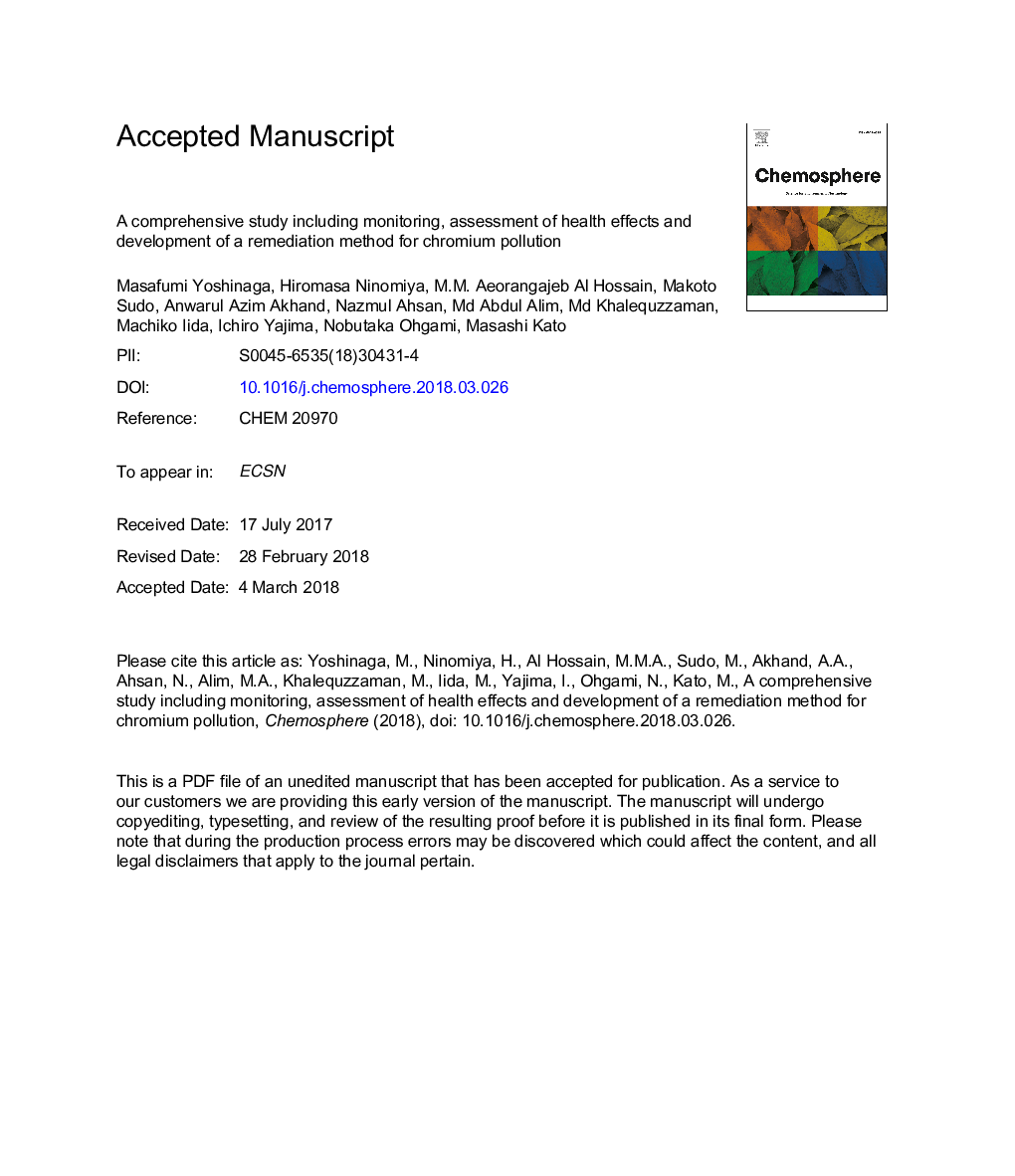| Article ID | Journal | Published Year | Pages | File Type |
|---|---|---|---|---|
| 8851640 | Chemosphere | 2018 | 40 Pages |
Abstract
Chromium (Cr) pollution caused by wastewater from tanneries is a worldwide environmental problem. To develop a countermeasure, we performed a comprehensive study using Hazaribagh, the tannery area in Dhaka City, Bangladesh, as a model. Our environmental monitoring indicated that the soluble form of Cr, but not barium or arsenic, in Buriganga River is derived from Hazaribagh. Our chemical analysis next showed that Cr, the primary pollutant in canal water at Hazaribagh, consisted of â¤0.7â¯Î¼M hexavalent Cr [Cr(VI)] and â¤1705â¯Î¼M trivalent Cr [Cr(III)]. Our biological study then showed that coexposure to Cr(VI) and Cr(III) at possible ratios in canal water at Hazaribagh synergistically promotes transforming activity of human non-tumorigenic HaCaT keratinocytes with activated MEK/ERK and AKT. Our environmental engineering study finally indicated that a magnesium and iron-based hydrotalcite-like compound (MF-HT), our original depurative, can maximally adsorb 9.0â¯mg/g Cr(VI) and 1041â¯mg/g Cr(III). Our results suggested the importance of removal of Cr(III) as well as Cr(VI) by showing that Cr(III), which is generally recognized as a chemical with low toxicity, synergistically promoted carcinogenicity of a low level of Cr(VI). Therefore, we propose the use of our original high-efficient and low-cost depurative as a countermeasure to address the worldwide problem of environmental Cr pollution.
Keywords
Related Topics
Life Sciences
Environmental Science
Environmental Chemistry
Authors
Masafumi Yoshinaga, Hiromasa Ninomiya, M.M. Aeorangajeb Al Hossain, Makoto Sudo, Anwarul Azim Akhand, Nazmul Ahsan, Md. Abdul Alim, Md. Khalequzzaman, Machiko Iida, Ichiro Yajima, Nobutaka Ohgami, Masashi Kato,
